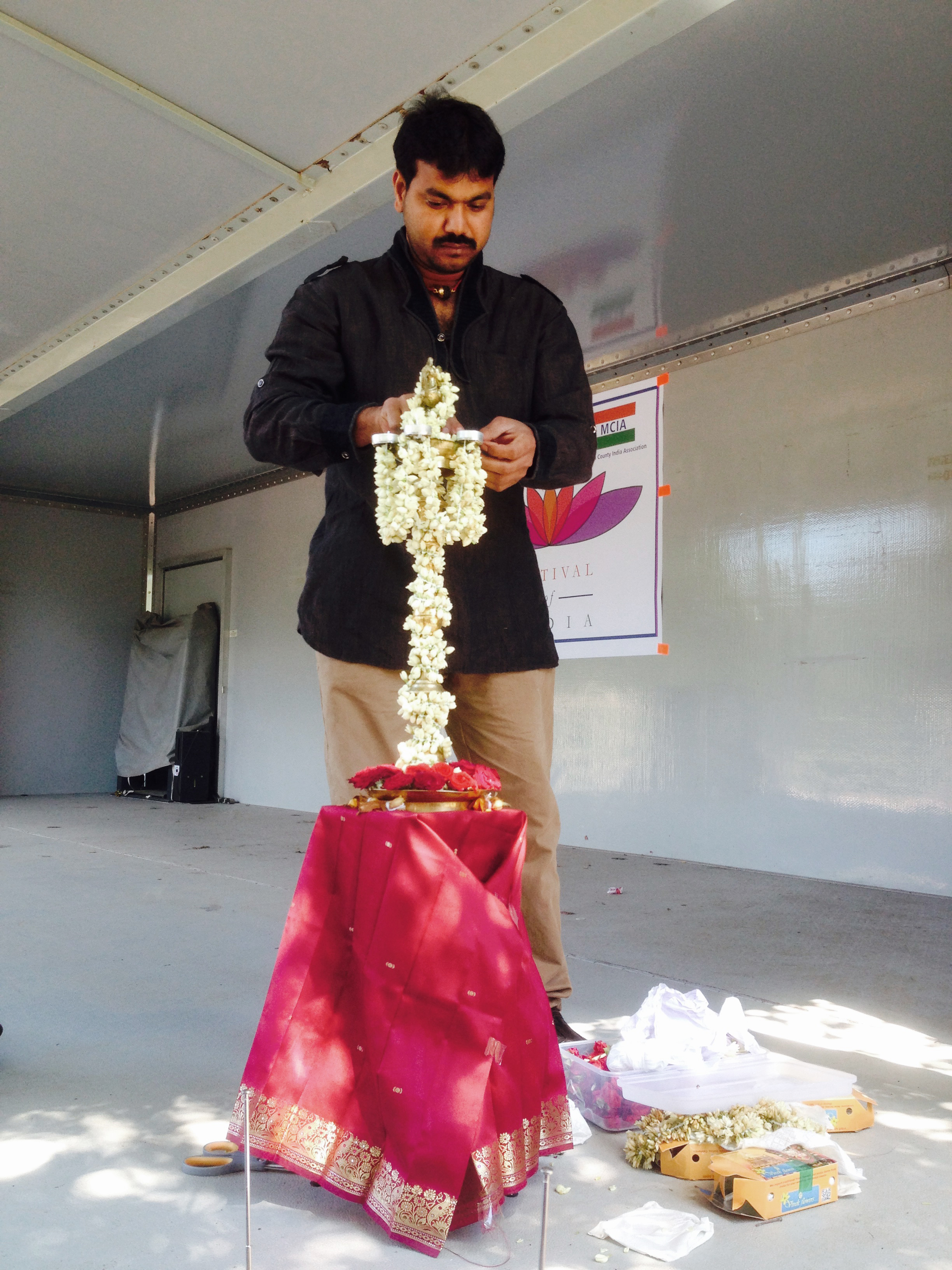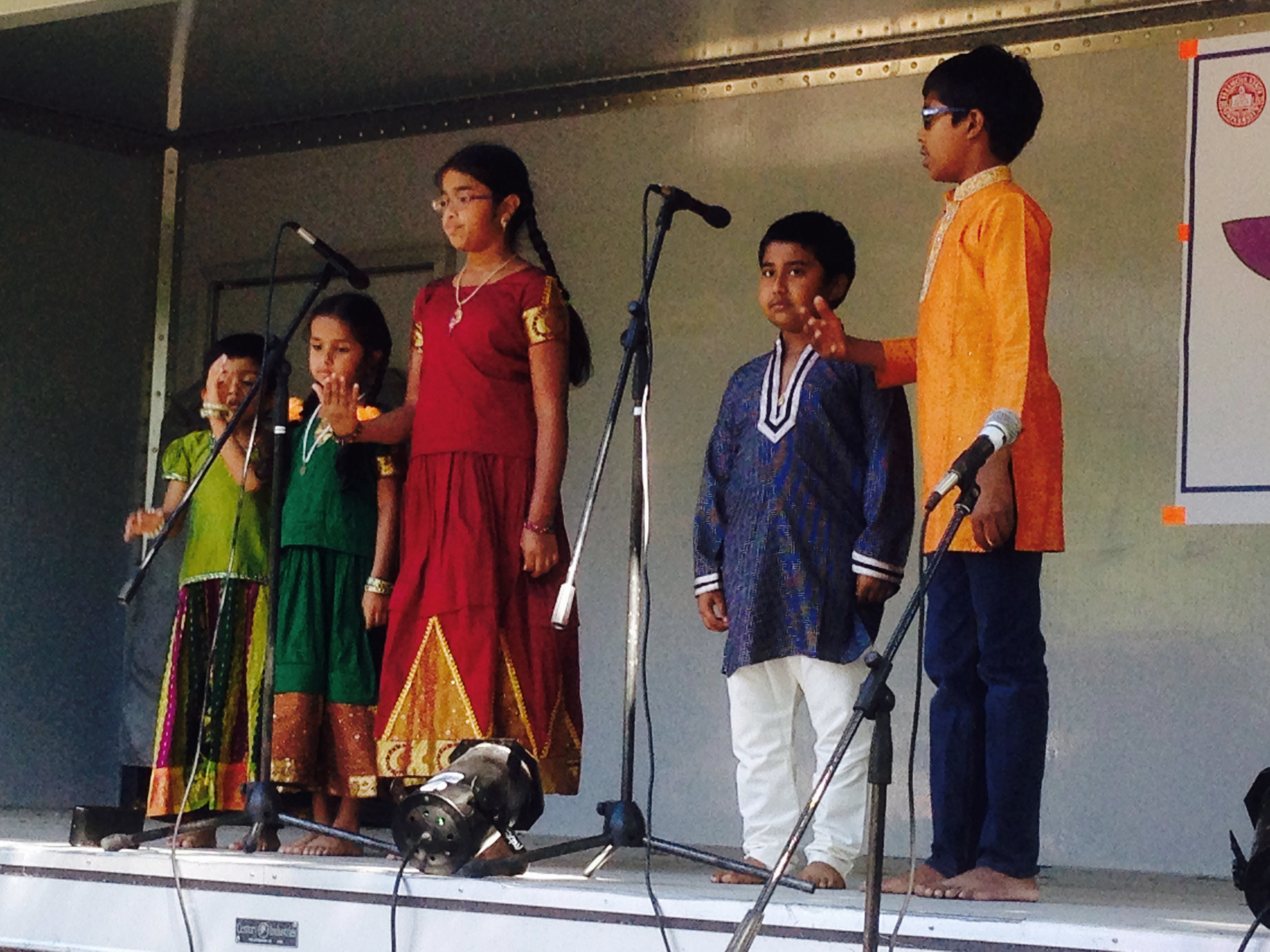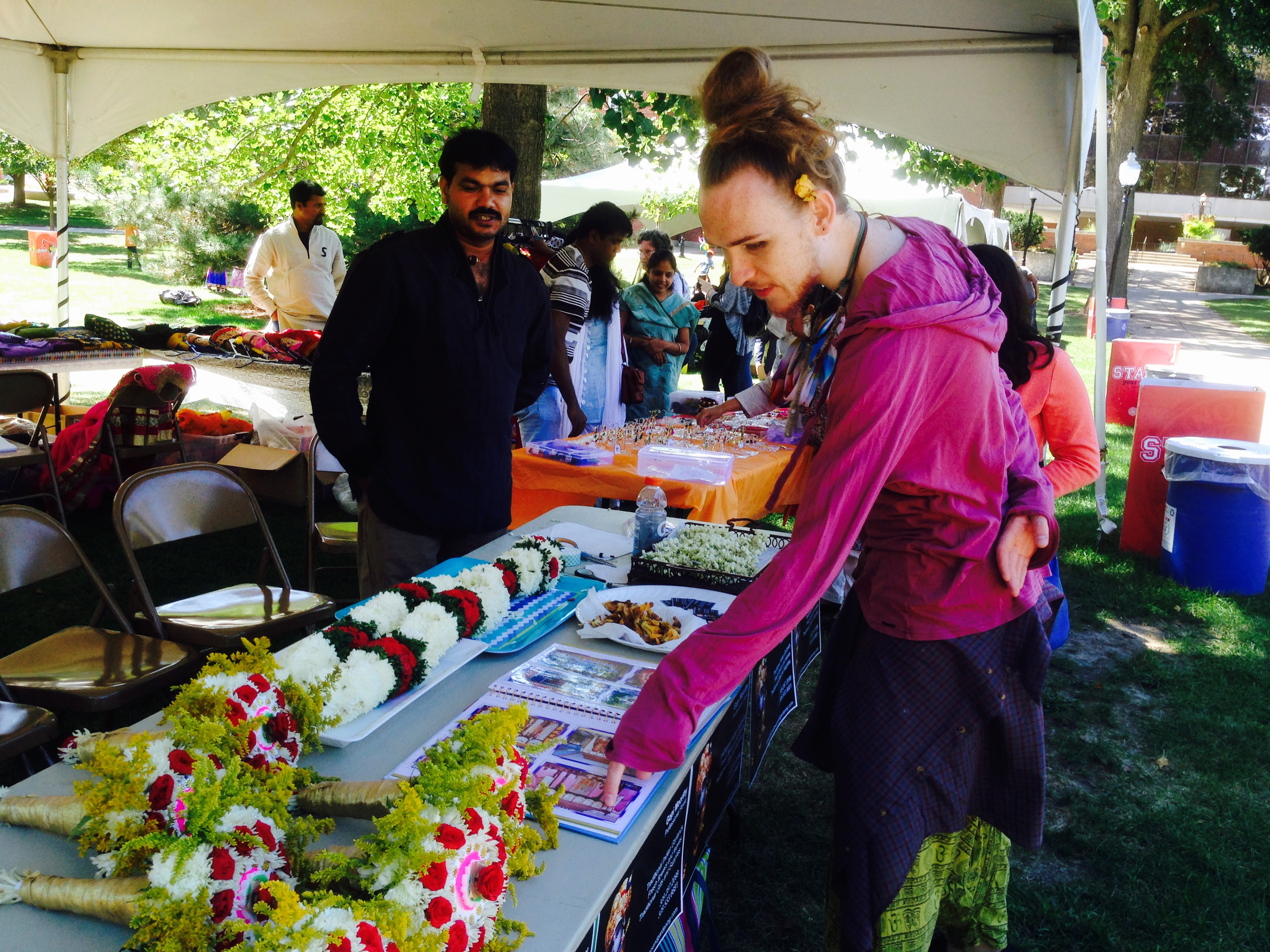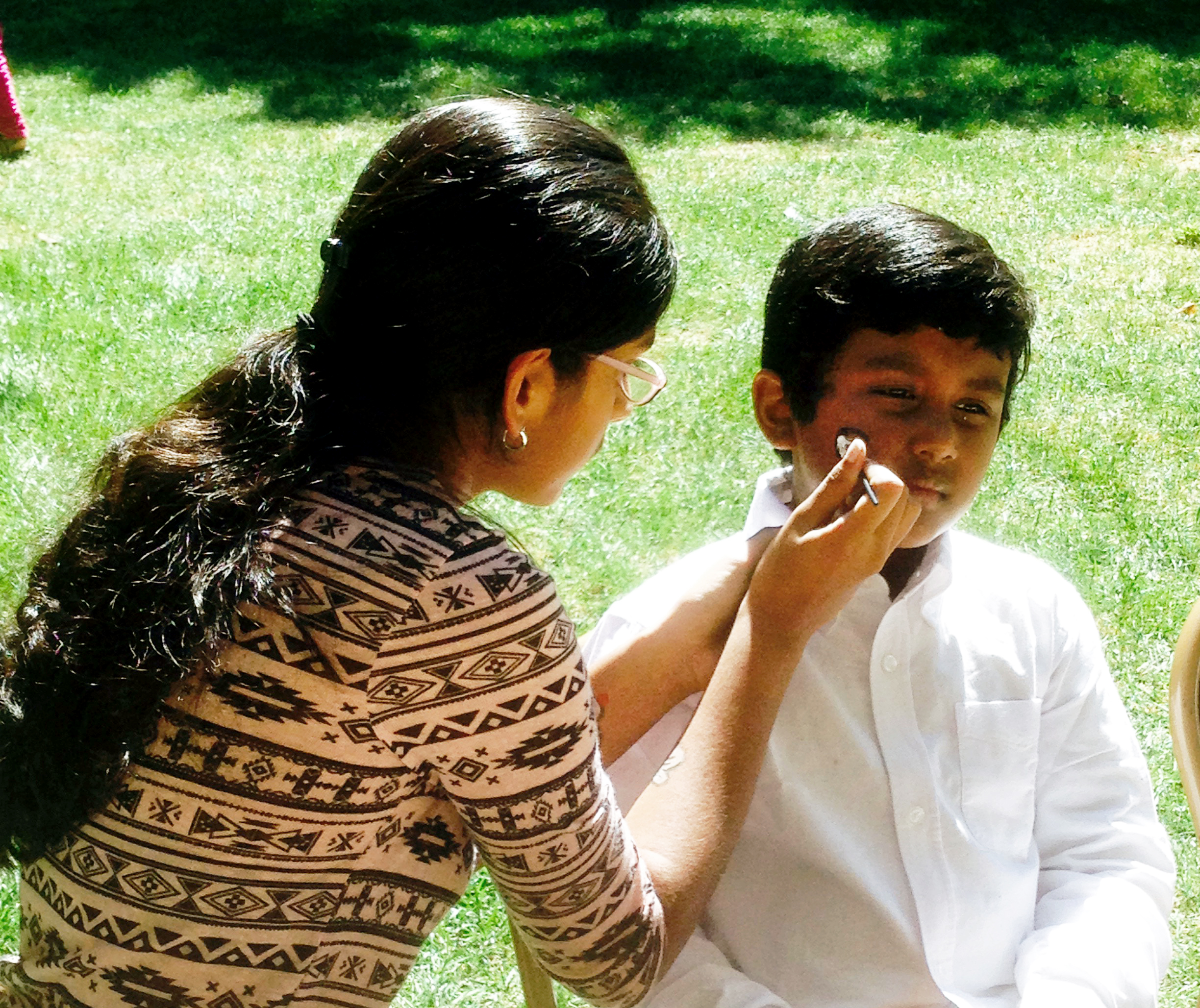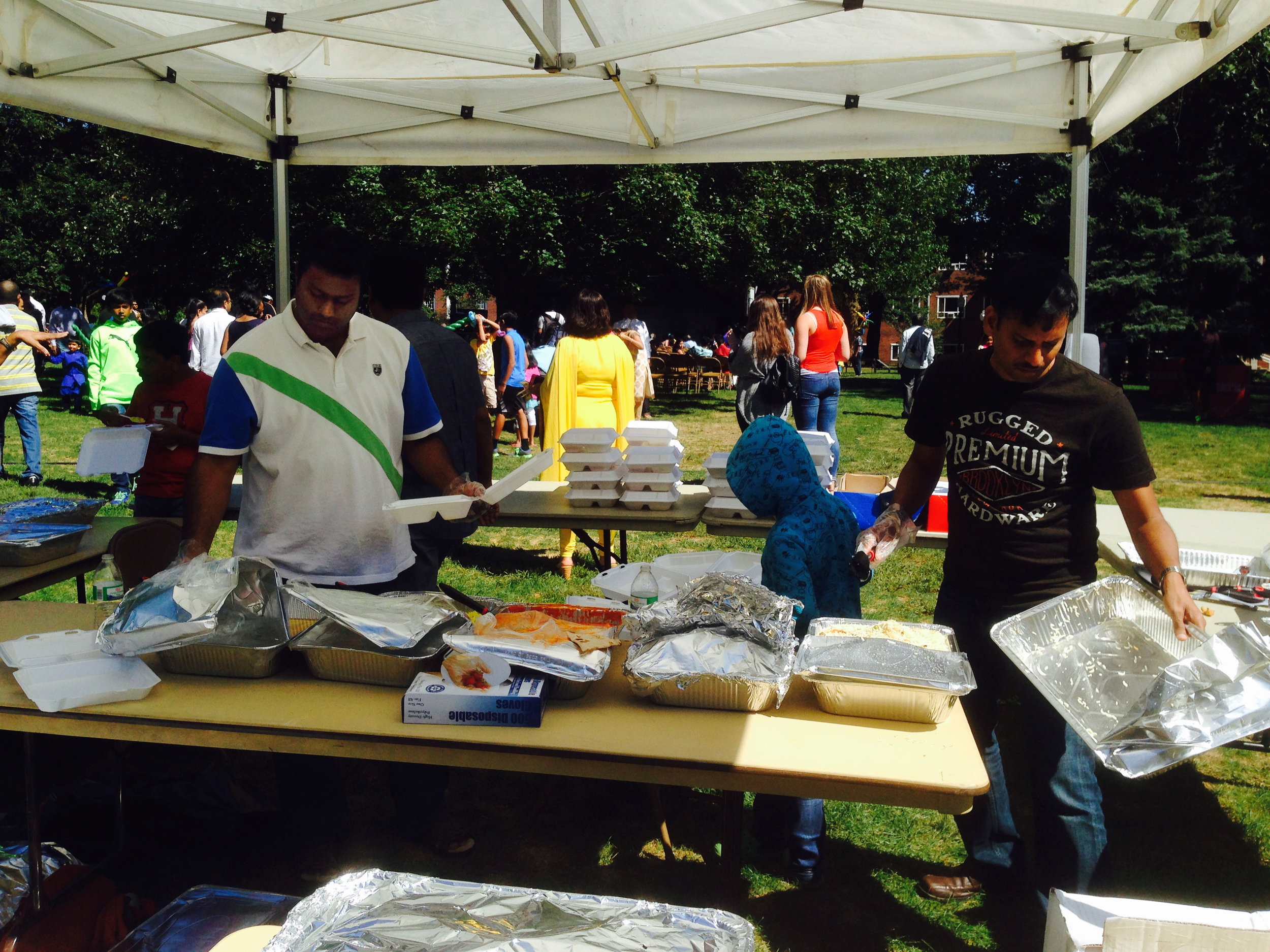The Illinois State University quad came alive Sunday with dance, color, and camaraderie both among Bloomington-Normal’s diverse but united Indian “communities” and between the cities’ Indian and non-Indian neighbors.
This year’s fifth annual Festival of India buoyed McLean County India Association (MCIA) President-Elect Archana Shekara, an ISU assistant professor of graphic design. But for Shekara, whose academic and personal worlds cross many cultures, the fun and fellowship are prelude to what she hopes to be an expanded outreach to and understanding with the community.
The first festivals were held at first the McLean County Museum of History and then Miller Park, “but since I teach here, I thought it would be so nice if we could do it here,” Shekara related.
“It’s a great collaboration between this university and the Indian community, the McLean County India Association,” she said. “People learn from each other – we’re having fun at this festival, but they’re also learning.”
The festival officially kicked off with the traditional Deep Prajavalan ceremony (see top photo at right) – the lighting of a lamp fashioned from flowers by Bloomington’s Krishna Flowers and Gardening -- led by 2015 MCIA President Uma Kallakuri, Bloomington Mayor Tari Renner, ISU’s College of Fine Arts Dean Jean M.K. Miller and Provost Janet Krejci, and Not In Our Town: Bloomington/Normal leader and Hindu Temple of Bloomington-Normal board member Mandava Rao.
In addition to onstage music and dance from throughout the subcontinent, the event featured Indian fashions, crafts and decorations, and spiritual, health information, and educational booths, as well as face-painting, a “bounce house,” and balloon animals. Representatives of the Twin Cities’ Hindu temple were joined by members of Bloomington’s International Society for Krishna Consciousness – a local Hare Krishna group.
The festival also showcased Indian art including rangoli -- patterns created on the ground or floor traditionally using materials such as rice flour and often placed at the doorway of a temple or home, “welcoming people and warding off evil,” said Shekara, an ISU College of Fine Arts Service Award recipient.
Visitors feasted on a hefty “lunch thali” combination plate featuring either paneer masala and or vegetable biryani (a rice dish) or samosas (savory pastries) – according to Shekara, all vegetarian to bridge the various dietary/cultural traditions of India’s diverse regions. The festival drew Indian-Americans, temporary Indian workers, and others from at least 14 Indian states – an impressive feat of coordination a myriad of customs, preferences, and attitudes designed to “celebrate our diversity and our unity.”
“The first thing that we tell people is that ‘we are Indians -- leave those cultural differences aside,’” Shekara stressed. “We all come together and celebrate India as a country, and celebrate the similarities. We all speak different languages -- Uma and I speak a different language at home. Uma speaks a language called Telugu, and I speak Kannada. And we speak English -- that’s what unites us. It’s a ‘foreign’ language; it’s not even Indian.”
But the Festival of India also is an invitation to the non-Indian community. “More and more” Twin Citians from other cultures have dropped by for a new experience or to meet their neighbors or coworkers, reported Shekara, who canvassed “every organization I could think of” to promote the festival.
A long-time MCIA volunteer who originally “was just having fun doing it,” eventually recognized “all these little gaps that are there in the community.” The Hindu temple provides a focal point and “an identity” for the cities’ disparate Indian communities, but events like the festival provide a way both to “connect those dots” and to reach out to the community in which Bloomington-Normal Indians live, work, eat, and shop, but from which some may feel disconnected.
Shekara and the MCIA are working to connect the microcosmic Indian community with the community at large. She recently attended Not In Our Town: Bloomington/Normal’s annual strategy planning meeting, and has provided cultural training and certification for local day centers “trying to understand their customers who leave their children.”
“The festival is bringing a lot of non-Indians onto the quad and trying to help everyone understand a little bit of Indian culture,” Shekara said. “But more needs to be done.
“When I teach my students about cultural identity, my students tell me I’m the first Indian that they’ve interacted with, let alone teach. And then I teach European graphic design – Swiss graphic design – and I teach it with an accent. I kept thinking about all this, and I thought, ‘Maybe as a president-elect or as a president next year, I need to do something more than the festival.
“I invited (NIOT:B/N’s) Mike Matejka to come and talk to my class. If I’m a minority and I start talking, they’re going to think, ‘Oh, she’s just complaining.’ But when you bring in a Caucasion who starts talking about diversity issues, that’s when people just start listening – it’s different. Just a person’s color completely changes everybody’s attitude and mentality.
Archana Shekara signing prints. (Photo by ISU College of Fine Arts)
“So then I thought I needed to start going and meeting people in the community. That’s when we start having conversations. These conversations bring us together, and then that’s when we realize we are not the ‘other’ – we are all the same. We are just all so caught up in how we look that we forgot, and then we are self-conscious. But we are the same – we have the same heart, we have the same thinking. But there’s a little bit of a gap in the community – we see that especially in the workplace.”

